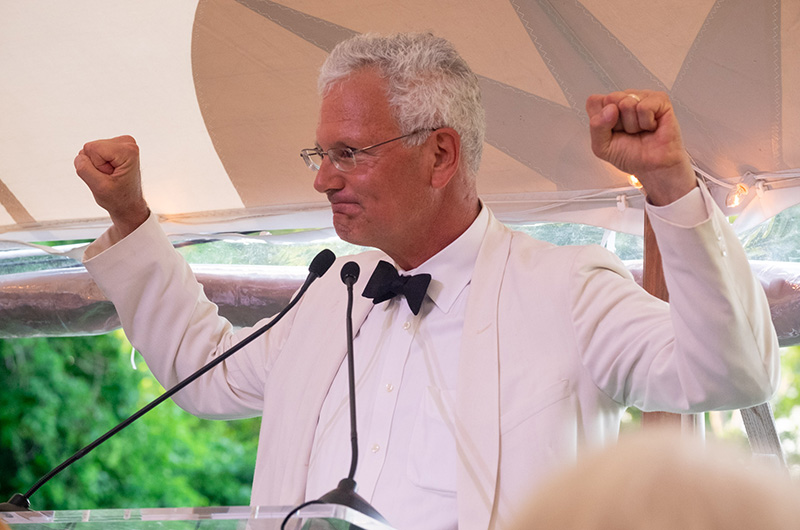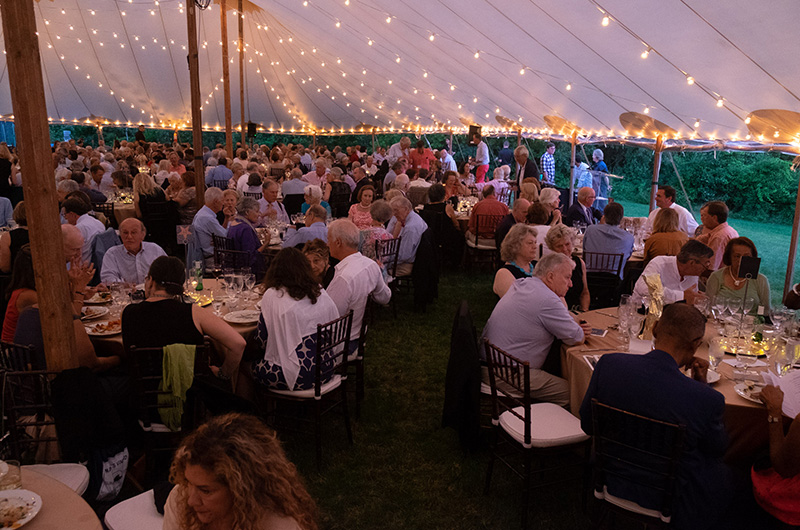At the Martha’s Vineyard Museum’s 20th annual Evening of Discovery last weekend, people who bought the $250 ticket weren’t just treated to Waldorf salad wraps, prime views, bottomless wine glasses, beef tenderloin and complimentary Chilmark Chocolates. They also got the chance to walk through the former marine hospital and current construction site on a hilltop overlooking the Lagoon, that will serve as the museum’s home come December, if all goes as planned.
“It’s amazing to see how it’s transformed from this year to last year,” said Susanna Schenk, who had just finished her tour of the building. “Last year it looked like an abandoned Bates Motel.”
Ms. Schenk’s Hitchcock reference was on-brand. The theme of the gala, which serves as the museum’s largest fundraiser of the year, was the Golden Age of Hollywood. Board members, donors, and Islanders alike dressed to the nines for the silent auction and accompanying Buckley’s catered buffet. Museum staff equipped a photo booth with noirish props, including plastic knives, pistols, masks and a rotary phone.
At the silent auction, Eistenstadt photos and night-at-the-museum birthday parties sold to generous donors, while others wrote checks to support the cause. All told, the museum grossed more than $400,000 from the gala, and accommodated nearly 500 people, according to special events director Katy Fuller. “It’s definitely our biggest ever,” she said.
In remarks, museum executive director Phil Wallis told the nearly 50 tables of patrons that the museum had raised 77 per cent of its $31 million goal.
“This project is nothing short of a symphony . . . 86 sub contractors, 18 staff members, 30 board members, hundreds of donors,” Mr. Wallis said. “Last year, we shared a vision. This year, we share a reality.”

Of course that reality still has a long way to go. Construction equipment loomed behind the elegant tent and repainted facade, while excited tour-goers found themselves brushing sawdust off slacks and heels upon exiting the site. Even so, most felt the walk-through was worth the price of the shoe-shine; if not to get a sneak peek at the impressive progress, then to see centuries-old brick, original doorways, and the bones of a building with as much history as the museum it is soon set to house.
“This will be open to the public come December,” Mr. Wallis said. “We are on time, we are on budget, and we are situated to make that happen.” Until then, he invited people to take hard-hat tours and see the property for themselves.
“To those of you in the room who have been wondering if this dream would ever come true,” said Stever Aubrey, chairman of the museum’s board of directors, “you are no doubt witnessing that it is.”








Comments
Comment policy »